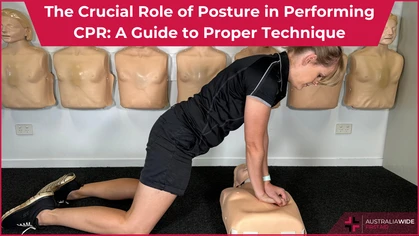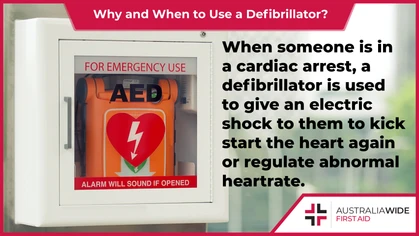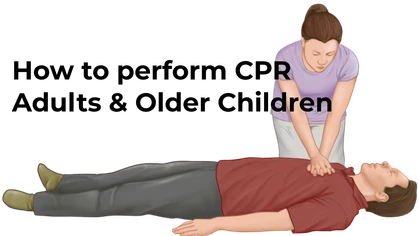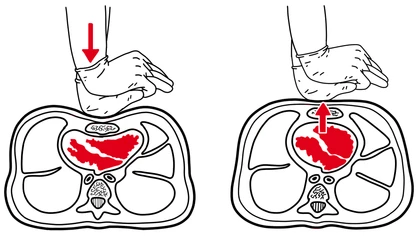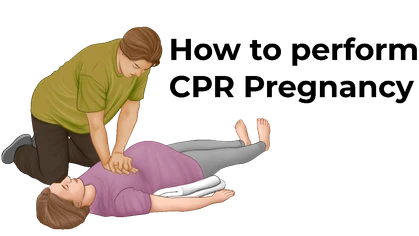Why Parents Should Learn CPR

CPR Resources
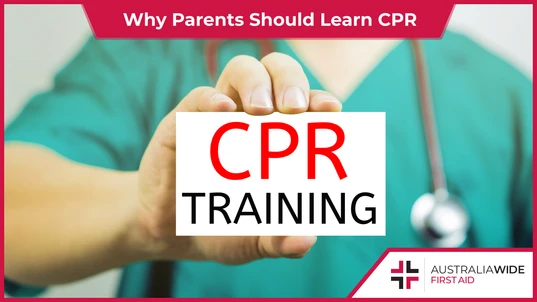
CPR methods of administration differ significantly between infant, child, and adult populations
CPR stands for cardiopulmonary resuscitation. While that may sound like something better left to medical professionals, it is absolutely a skill recommended for parents and caregivers. In 2019, Cardio Partners, a leader in CPR technologies such as the Automatic External Defibrillator (AED), published an article with the following alarming statistics:- Every minute that passes without CPR, a person’s chances of survival decrease by 10%.
- Brain damage begins to occur at 4 minutes without CPR or defibrillation.
- EMT response times are typically 12-14 minutes. .
Current CPR Status Among Australian Adults
In a national study published by Cartledge, et al. in 2020, it was determined that 56% of Australian adults reported having ever received CPR training. Of those people, only 22% had received training in the past year. Given what we know about survival rates when CPR is delayed, we must increase our training rates among Australian adults to promote public health. The most significant barriers to receiving CPR training outlined in the study above were a lack of awareness that training programs exist, not knowing where to go for training, and cost. At Australia Wide First Aid we are working to provide CPR training to as many individuals as possible at an affordable cost. You can learn more about our CPR programs here.Why CPR is Important for Parents
A common misconception about CPR is that it is only for someone suffering from a heart attack. Parents may think it unlikely that their child suffers a heart attack, so it is unnecessary to learn CPR. However, CPR should be administered any time there is a loss of effective heart function or breathing. This may occur during drowning incidents, after seizure activity, after a traumatic fall, an unresolved choking incident, or any loss of consciousness or breathing. Children are particularly susceptible to drowning and choking incidents. It is in a parent’s best interest to be prepared in case CPR is required. Additionally, CPR training for children and infants differs significantly from adult training. The approach to chest compressions and AED placement is different between children and infants. An adult should not assume that because they know how to perform CPR on adults, they are competent to perform CPR on children and infants.What Happens During CPR?
CPR is a way to maintain blood flow and oxygen to vital organs when the heart is no longer able to act efficiently as a pump. Chest compressions refer to the applied force of your hands into the chest wall to pump blood out of the heart. The release of the force allows the heart to refill. CPR is a manual pump action for a heart that is unable to perform. The administration of rescue breaths during CPR fills the lungs with oxygen in cases where a person is unable to fill the lungs by breathing on his own. Rescue breaths are considered secondary in line of importance during CPR, so compressions should always be started first. In cases where a rescuer feels uncomfortable providing rescue breaths, they can choose to only provide chest compressions as those are the most important part of successful CPR.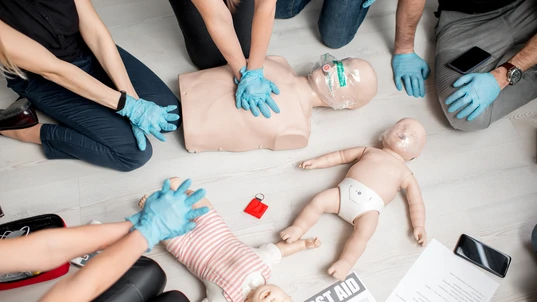
CPR methods of administration differ significantly between infant, child, and adult populations
How to Start and Maintain Your CPR Training
If you think you might be interested in learning how to provide CPR but aren’t sure where to begin, you can start by lowering your pressure threshold. Administering CPR is as much about having the confidence to act in an emergency as it is about knowing the proper protocols and methods. The fact that you want to know how to help someone will take you far. When you are ready to look for a specific course, check out our Australia Wide First Aid course list to determine the best option for you. We offer CPR training, First Aid training (which includes CPR certification in addition to training on how to handle common injuries and ailments), and Child Care CPR training which is specifically designed for staff in the education and childcare fields. CPR training is not able to be completed online as it requires a return demonstration of techniques on a manikin. However, Australia Wide First Aid offers a combined online learning tool with an in-person assessment check-off. CPR training can be completed in less than 1 day. We recommend receiving CPR training once a year to maintain optimal levels of confidence, knowledge, and skill sets. Check out our courses today. You won’t regret being prepared during an emergency.Sources
https://www.aed.com/blog/immediately-performing-cpr-is-crucial-this-is-why/ Cartledge S, Saxton D, Finn J, Bray JE. Australia's awareness of cardiac arrest and rates of CPR training: results from the Heart Foundation's HeartWatch survey. BMJ Open. 2020 Jan 6;10(1):e033722. doi: 10.1136/bmjopen-2019-033722. PMID: 31911523; PMCID: PMC6955479. https://www.ncbi.nlm.nih.gov/pmc/articles/PMC6955479/
Originally published at
https://www.australiawidefirstaid.com.au/resources/why-parents-should-learn-cpr
as part of the Australia Wide First Aid Articles Library
